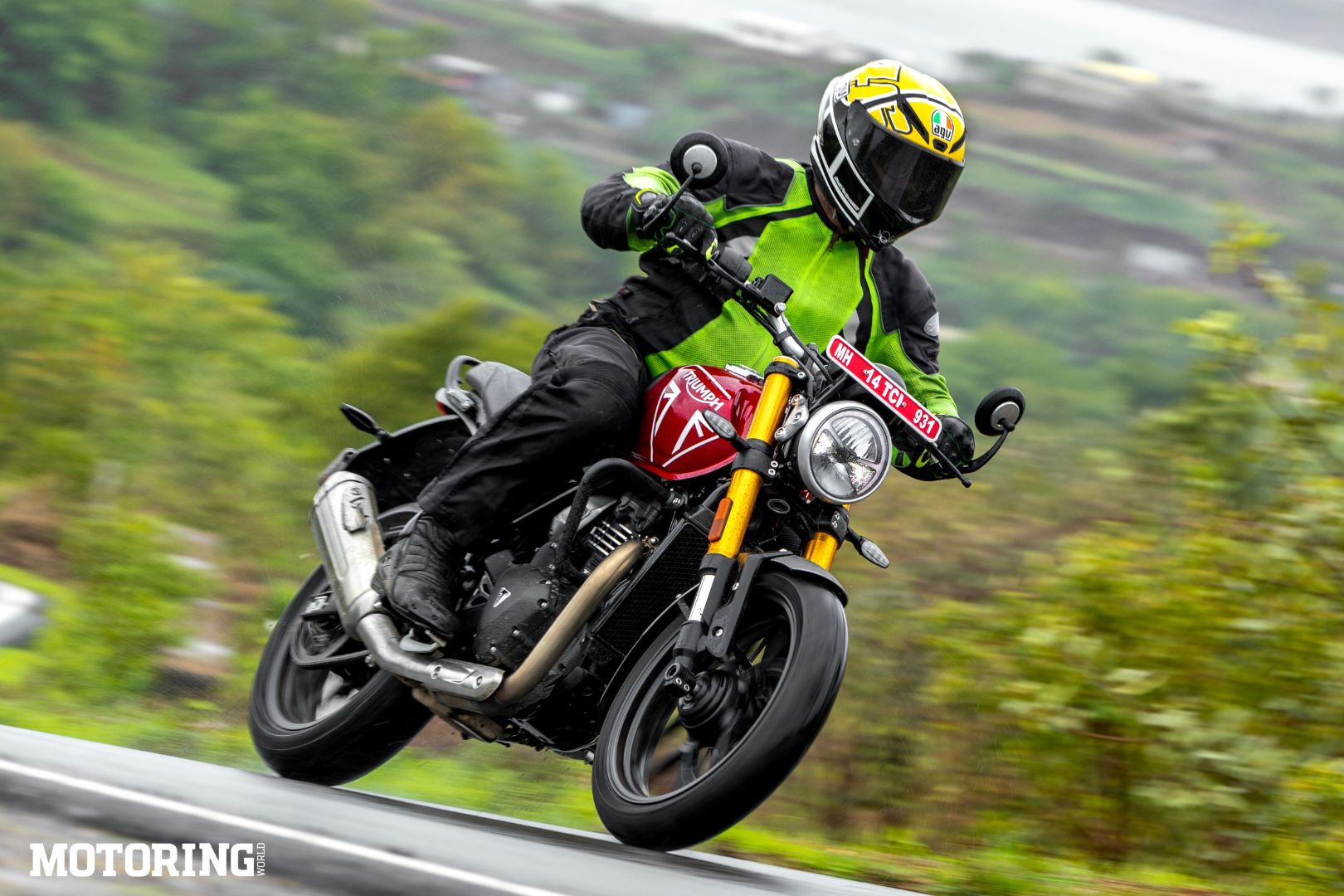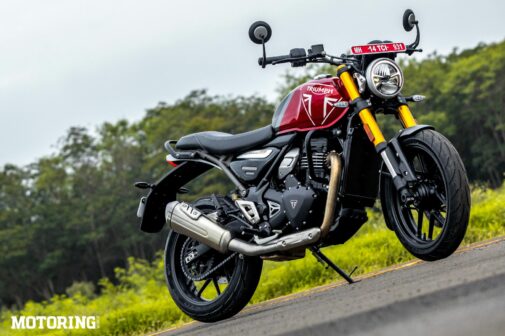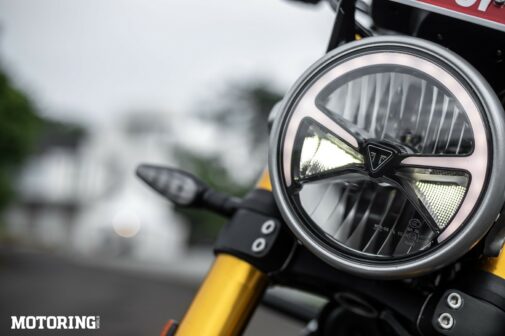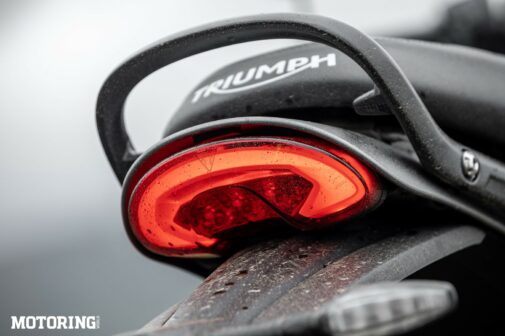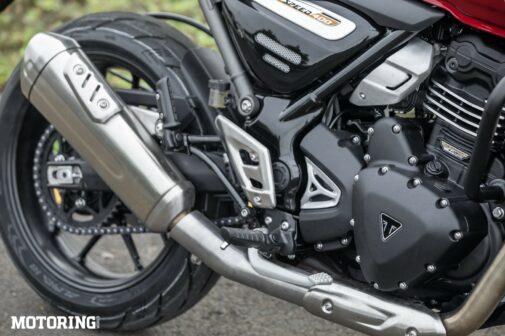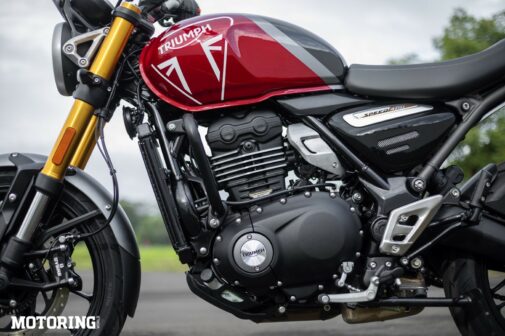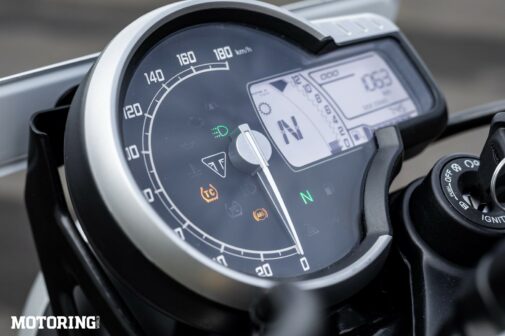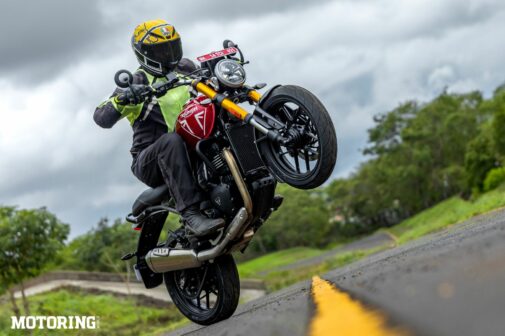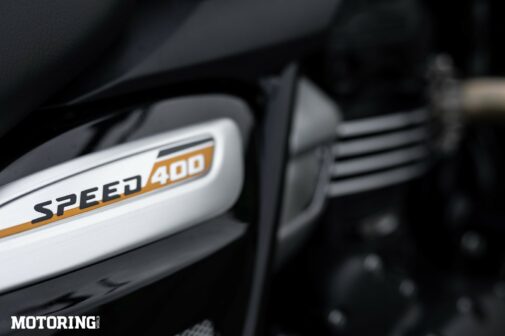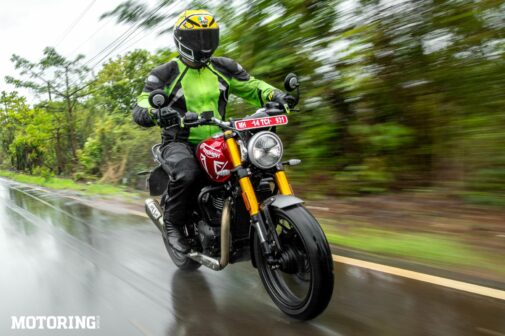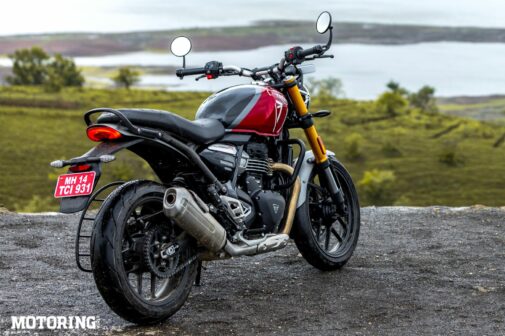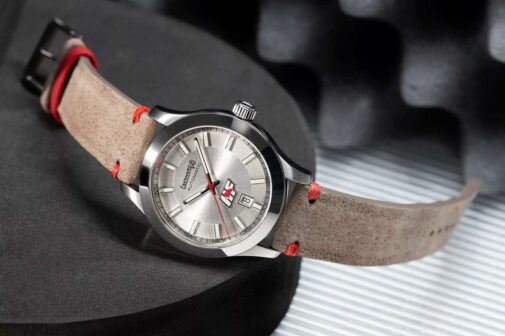I have a theory based on my meandering observations — any notable change in a particular existence is spaced by exactly five years. This opinion is formed by motorcycles, and the frequency of real game- and life-changing examples that have come along, the last three being the Yamaha YZF-R15 (2008), the KTM 390 Duke (2013), and the Royal Enfield 650 twins (2018). For lack of a better explanation, that just seems to be the quinquennial rhythm of the organism we call the motorcycle industry. And so, right on cue, here’s the bike we were due that raises the standard for riders and manufacturers alike — the Triumph Speed 400, a motorcycle that elevates the concept of feel above everything else.
If you’ve been interested in the Triumph Speed 400 and have been staring at its images for the past few weeks since its unveiling in London, you’re on the right track — it wasn’t Photoshop, the bike is indeed as good as it looked in those photographs. In fact, it was even better in real life, watching the light bounce off its engine’s machined fins, the historic Triumph-y shapes on its engine covers, and the meticulous attention to detail. To the crowd of Indian enthusiasts who have been fed a steady diet of adequate fit and finish at best, the Speed 400 will prove to be downright exotic. The fact that it’s made in India by Bajaj will boggle the mind even further.
In no way does the Speed 400 feel like a cost-cutting compromise; park it in any Triumph showroom in the world and it will look right at home. Traditional Triumph design cues are expressed in high-quality finishes and with well-balanced overall proportions to make for a motorcycle that is instantly desirable. The LED headlight on the golden fork, the metal finish of the exhaust system, the stylised side panels, and the raked tail create a presence that looks good even in black, let alone the typical Triumph red or the blue one. I don’t remember the last time I liked the black option in any motorcycle. And to do full justice to the bike, I suggest you check it out in person.
Besides being a work of art, the all-new TR Series single-cylinder engine packs a solid punch as well. From 398cc it produces 39.5 bhp at 8000 rpm and 3.82 kgm at 6000 rpm in a package that weighs 176 kg. These numbers may not set bench racers’ pants on fire, but they made for endless second-gear wheelies and a top speed of 160 kph on the meter, so I wasn’t complaining at all. The Speed 400 is one polished hooligan of a motorcycle, that’s for sure. However, it’s a very forgiving motorcycle as well. For example, the torque-assist clutch; I let the clutch out with my hand off the throttle from standstill, and the bike started moving and kept going without any jerks. Handy feature in traffic, that. And it sat in top gear at 50 kph if I wanted it to, exuding that high-quality feel even at relatively pedestrian velocity.
Right off idle, the engine chugged along like a big single, moving into a thrumming mid-range before transitioning into a screaming top end, and all the while the gearshift felt well-weighted and precise. There were vibes, as is inevitable on a 400cc single, but even those were of a refined and engaging nature. In terms of character, the Speed 400’s gearing seemed to be on the shorter side of the spectrum, which explains all those second-gear wheelies. That also explains why the indicated top speed didn’t change much if I crouched or sat upright; the Speed 400 made the most of its powertrain setup in a manner that’s more than enough to blitz the real world. And the rest of the bike proved this point as well.
The quality seen on the Speed 400 was also beautifully translated into its riding experience. The suspension’s movement felt as synchronised as everything else on the bike, which allowed me to fling it around as I wished. The Speed 400 felt planted and agile at all times, with a carefree behaviour that heightened the more I rode it. The steering was light and predictable, and the 17-inch wheels traced graceful lines even on thoroughly wet tarmac. Even in quick changes of direction, the Speed 400 was unruffled by hamfisted inputs and was everwilling to change lines mid-corner. Cornering clearance was generous, too, and I never grounded anything even at Bajaj’s fun Chakan test track. Also, seeing as it ran the same tyre sizes as the street-based KTM 390s, I noticed that the last centimetre or so at the edge of the rear tyre never saw any use despite extreme lean angles.
On rough surfaces out in the real world, the slightly firm setup did make itself known, but it wasn’t exactly what I’d call harsh. Over bumps and through potholes, the Speed 400’s suspension movement felt controlled and progressive, with no undue bouncing around. The only hitch I felt was that the Apollo H1 tyres on my bike were restraining things a bit. Sure, they did everything well, even in the wet, but they didn’t talk to me through the suspension enough, especially when the going got brisk. Or maybe I wasn’t willing to let go of the fact that the UK bikes had Metzeler Sportec M9 RR tyres, and that I always want the best possible rubber on any bike. Oh, well. Then again, I rode the bike with the traction control off for most of the time which cemented how friendly the bike really was.
Even when I was hard on the brakes and banging down the gearbox, the Speed 400 stayed true to its line, with only an initial chirrup of protest from the rear tyre before the slipper clutch took over. The brakes were always dependable and the suspension settled well before diving into a corner, exhibiting a composure that went hand in hand with the eager engine. The Speed 400 certainly proved to be a motorcycle that was easy to get comfortable and go fast on. By the end of the day, even in pouring rain, I found myself sitting at speeds that I’m used to on my KTM 390 Adventure. Quite the apt choice of name, then, right?
I’m sure you’ll see for yourself what the Speed 400 is when you ride it. What’s more important, I think, is what the Speed 400 means. An indication of it was the roar that erupted in the auditorium when the bike’s price was announced. At Rs 2.33 lakh, ex-showroom, the Speed 400 is an utter no-brainer. It’s a collaboration done right, it’s a motorcycle that outperforms the hype, and it combines imagination with value for money in a way that we haven’t really seen before. It’s not the most powerful motorcycle around nor does it have any connectivity features, but it achieves a level of all-round feel and quality that is unprecedented.
When a thought makes the transition into a fact, it’s quite the ride. And that’s what great motorcycles do to their riders, irrespective of whether they realise it or not. The Speed 400 has the performance and useability that could make it the only bike you’ll ever need — and the heritage and quality that heirlooms should have in order to be passed down to the next generation. How many recent bikes have made you feel like that?
When people see what they’re getting with the Speed 400, I bet a lot of them will have the same epiphany I did when I saw and rode it. A motorcycle that looks, feels, sounds and goes this well at this price? I can only imagine the red faces behind the closed doors of other manufacturers. The Speed 400 is a beautiful wake-up call for everyone, what we should’ve been getting all along. And, immediately on its arrival, it’s the best motorcycle ever made in India. Take a bow, Bajaj and Triumph!
MOTODATA
Triumph Speed 400POWERTRAIN
Displacement:
Max Power:
Max Torque:
Transmission:
398cc, single
39.5 bhp@8000 rpm
3.82 kgm@6500 rpm
6-speed
CHASSIS
Type: Tubular steel frame
BRAKES
F/R: 300-mm disc / 230-mm disc
TYRES
F/R: 110/70 R17 / 150/60 R17
DIMENSIONS
L/W/H (mm):
Wheelbase:
Ground Clearance:
Seat height:
Kerb Weight:
Fuel Capacity:
NA/814/NA
1377 mm
NA
790 mm
176 kg
13 litres
PRICE
Rs 2.33 lakh (ex-showroom)





